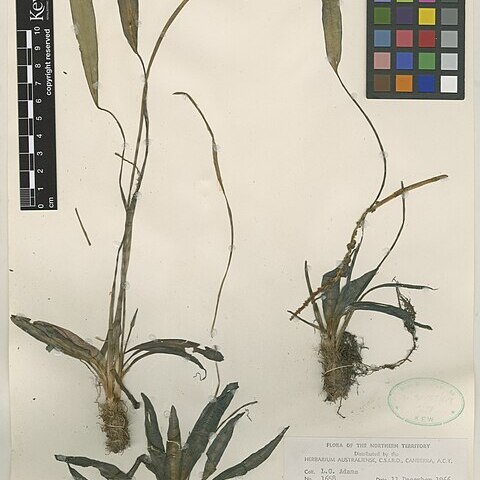Tubers ovoid to elongate, to 4 cm long. Leaves submerged and rarely floating. Submerged leaves: petiole to 17 (–35) cm long; blade narrowly to broadly elliptic to elongate, 7–34 (–42) cm long, 0.8–3.7 (–6.7) cm wide, not bullate; base broadly cuneate, obtuse or rarely truncate; margins slightly undulate to undulate; apex blunt-cuneate or obtuse; veins (5–) 7–9 (–11); lacunae in 0–2 (–4) rows on each side of midvein. Floating leaves: petiole 60 (–90) cm long; blade narrowly elliptic to slightly obovate, 9–19 cm long, 2.2–3.5 cm wide; base obtuse, broadly cuneate, cordate or truncate; margins flat; apex obtuse; veins 7–9. Peduncle to c. 80 cm long, broadening at inflorescence base. Spathe to 1.5 cm long, caducous. Inflorescence emergent, single, to c. 5 cm long, yellow. Flowers closely or widely spaced, turned in all directions, bisexual. Perianth segments 2, spathulate, 1–2 (–2.7) mm long, yellow, 1-veined. Stamens 6. Carpels (2 or) 3 (–6). Fruiting carpels oval and thickcoated, 2.5–5.8 mm long, 1.8–5.0 mm wide; beak mostly lateral, curved, to 1.5 mm long. Seeds ellipsoid, 2–5 per fruit, 1.2–3.2 (–4.2) mm long, 0.5–1.1 (–1.6) mm wide; single testa closely adhering to embryo.
More
A small plant which grows in water. The leaves are 10-50 cm long by 1-5 cm wide. They are narrow, dark green and crinkled. Leaves are in clusters at the tip of the corm. They are often under the water but are sometimes floating. The floating leaves are smaller. The flowers are on a thin stem 1.5 m long. The flowers are small. They have a scent. The fruit is a follicle 2.5-6 cm long and 2-5 cm wide. There are 2-5 seeds.

